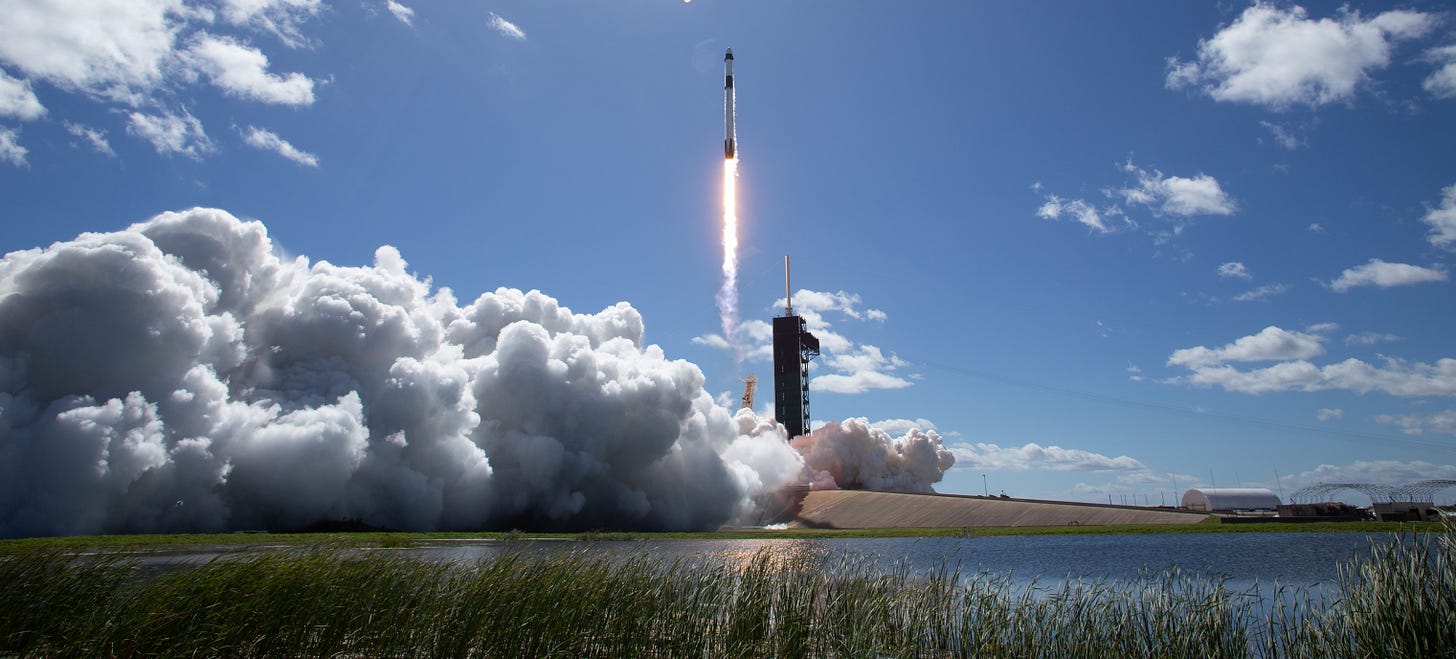
Full Throttle posts twice a week. It's free. Please share and subscribe here.
The population on the International Space Station (ISS) increased to 11 last week with the arrival of NASA’s SpaceX Crew-5. These missions are feeling a bit more routine. But we learned some interesting facts after the Falcon-9 rocket had done its job. Something came close to delaying the launch and there is a new attitude from the partners on the ISS- the Russians.
FOD
With the astronauts strapped into their seats and the hatch closed, SpaceX mission control got on the radio feed and told those onboard there was a problem. A piece of FOD was spotted. FOD is the term for foreign object debris. Something, whatever it might be, was where it wasn’t supposed to be.
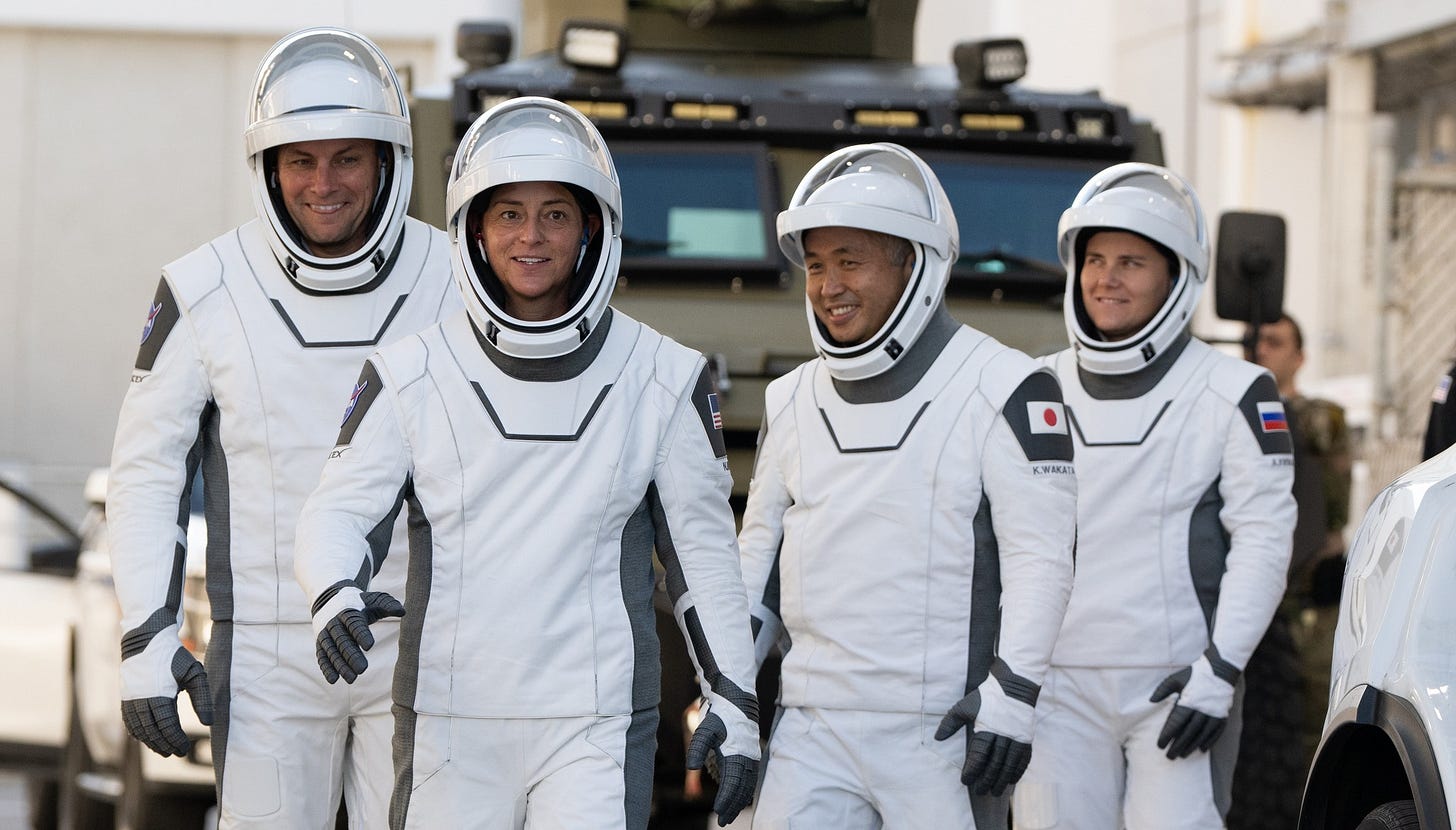
NASA SpaceX Crew-5 heading to the pad for launch to the ISS. (Credit: NASA)
With an hour and 34 minutes before launch, SpaceX engineers noticed this piece of FOD on the side hatch seal of the Dragon capsule. The closeout crew had just closed and turned the bolts on the hatch when mission control said the hatch would have to be reopened and cleaned. They had 12 minutes to get the job done to keep the countdown running.
The crew on the pad got all that done in time. After the launch, we learned that the FOD was a single human hair!
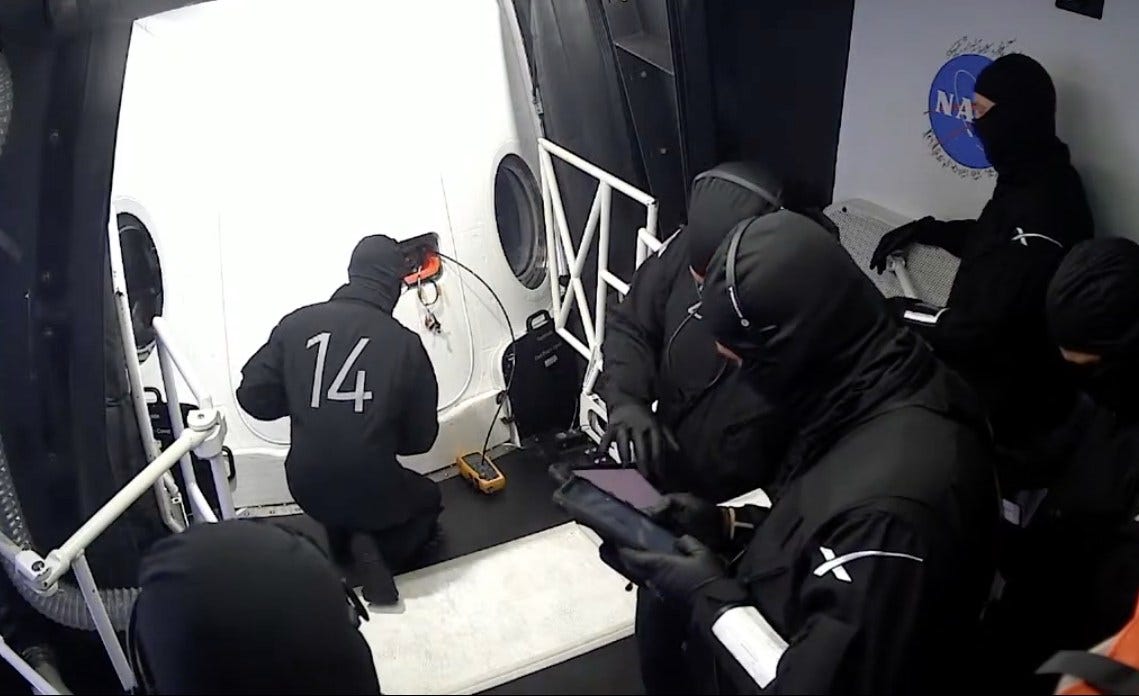
SpaceX ground crew in clean suits seal the side hatch of the Dragon capsule for a second time. (Credit: SpaceX)
To point out the preparations the SpaceX and NASA crews go through for these launches, NASA Program Manager for Commercial Crew, Steve Stitch, highlighted the hair that almost delayed the launch.
The teams take pictures of the closeout of the capsule and the seal around the hatch “The (SpaceX) team in Hawthorne saw one human hair on that hatch seal and spotted it very quickly and said, ‘let’s reopen the hatch and get that hair off and make sure everything is good,’” Stitch said.
NASA's Steve Stitch on the "one human hair" that could have delayed the Crew-5 launch. (Credit: NASA) Full video version here.
NEW PHASE OF COOPERATION
On board the capsule were two US astronauts, a Japanese astronaut, and a Russian cosmonaut. That’s right, after all the harsh words from the Russian space agency following the country’s invasion of Ukraine, the crew-swap program continues. Just days earlier an American astronaut flew on a Russian Soyuz to the ISS.
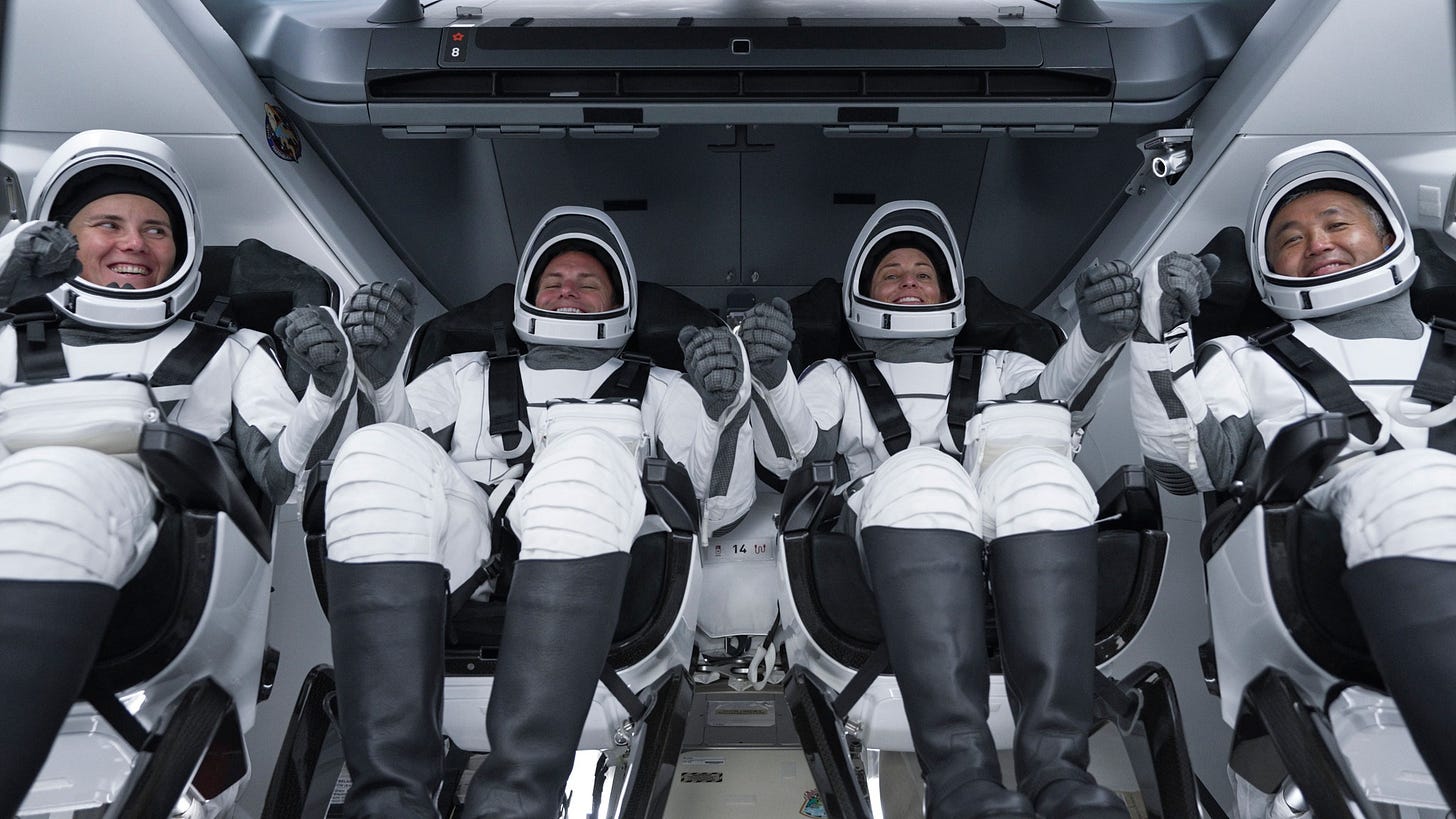
From left to right, Cosmonaut Anna Kikina, NASA astronaut Josh Cassada, Commander Nicole Mann, and Japanese astronaut Koichi Wakata in the Dragon capsule before launch. (Credit: NASA)
A lot has changed since those heated Twitter battles between the head of the Russian space agency Roscosmos and former astronaut Scott Kelly. The head of Roscomos, Dmitry Rogozin, has been dismissed from his job. The head of human spaceflight for Russia these days is former cosmonaut Sergei Krikalev. He is a Russian hero for many reasons. Krikalev was a member of the first crew on the ISS. He was in Florida for the launch of Crew-5.
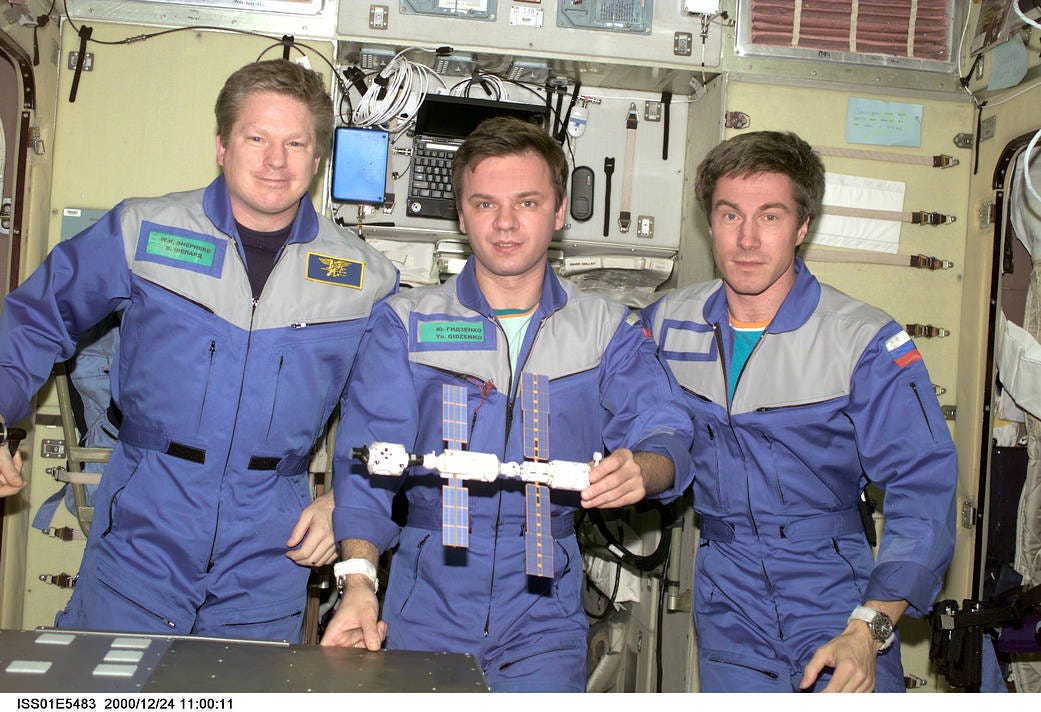
Sergei Krikalev, on the right, during the first mission on the International Space Station. (Credit: NASA)
Krikalev made it clear after the Falcon 9 cleared the atmosphere that these are new days. “We start a new phase of our cooperation... start to do this exchange flight,” he told reporters. Krikalev said this new phase of cooperation is actually just a continuation of, “what started many years ago, in 1975, when Apollo and Soyuz crews worked together. Now we continue our cooperation.”
INTENTIONAL?
Reporters wanted clarification after all the bombastic rhetoric. My Discovery Channel colleague, Christian Davenport of the Washington Post, asked Krikalev directly if this was an attempt to smooth over relations, a concerted effort to turn down the temperature that arose under Rogozin and his heated talk.
Krikalev, the Russian hero, said only four words in response. “The answer is yes.”
Those are words NASA leadership have wanted to hear publicly for months.
Roscosmos head of human spaceflight Sergei Krikalev at the post-launch news conference explaining Russia's "new phase of cooperation." (Credit: NASA)
MOM, LOOK!
Finally, after the docking of the Dragon at the ISS, three rookies came aboard the space station including the commander of Crew-5. Nicole Mann is a Marine Corps Colonel and F-18 pilot. She is the first Native American woman to make it into space. But Mann is just happy to be there. She was originally assigned to the Boeing Starliner for her first flight to space. But Boeing’s troubles sidelined Mann. She was was reassigned to this mission to get her astronaut wings.
On board the ISS, Mann gave a shoutout to her mother. “Mom look, I am finally in space.”
Nicole Mann, who joined the astronaut corps nine years ago, speak on her first arrival on the ISS. (Credit: NASA)
Who said these launches are getting routine? A single human hair, a new phase of cooperation, and a shout out to mom!
Please share and subscribe here.
Follow me on Twitter, Instagram, and Linkedin.
(Cover image credit: NASA)




